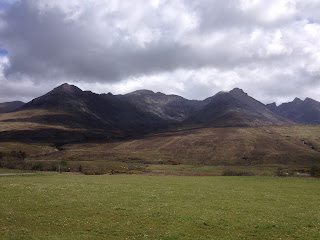
Proud Parents (terms and conditions apply) Since our last blog in mid-May, the successes and failures of another breeding season have been playing out. Immediately in and around our garden, broods of Siskins, House Sparrows, Great Tits, Greenfinches, Dunnocks and Robins have been all been apparent as you would expect. Swallows finally occupied the nesting area in our workshop in May, a month later than the 2016 pair, and although initial signs were good, we returned home from a week in Wester Ross at the start of June to find the male on his own. A repeat of 2016 seemed to have taken place, with 24 hours of heavy rain having taken its toll though the pair hadn't even laid eggs this year. As I write this, even the lone male now seems to have moved on or succumbed in some way - a great shame. House Martins prospected the nest bowl we put up last year, but no one has yet taken up residence. In other 'bad news', our local Hen Harrier pair have failed to ...





